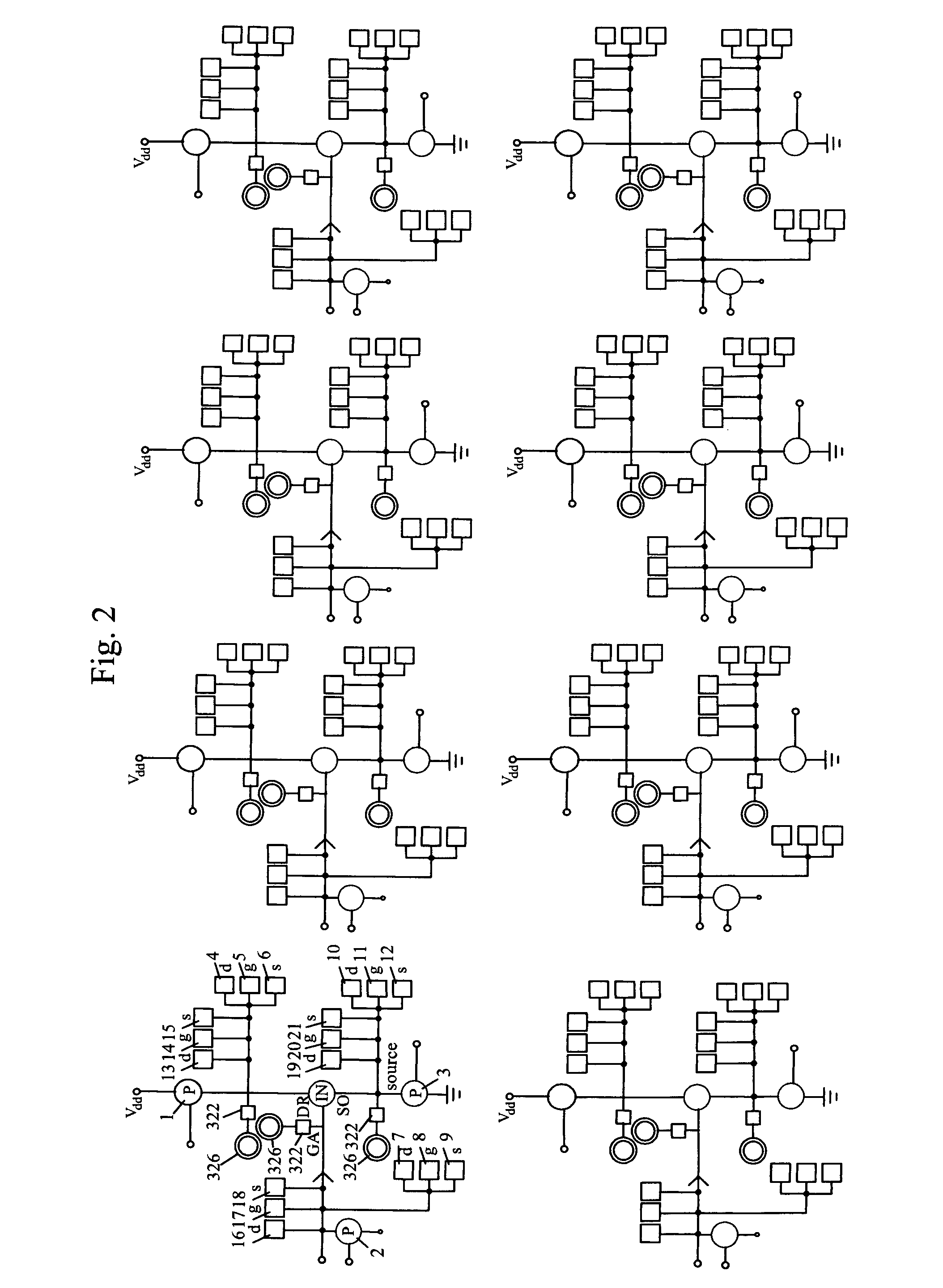Super-scalable, continuous flow instant logic™ binary circuitry actively structured by code-generated pass transistor interconnects
a pass transistor and binary circuit technology, applied in the direction of digital computers, instruments, computing, etc., can solve the problems of not providing the universality that was sought, and the use of that method for the entirety of some huge algorithm would be quite impractical
- Summary
- Abstract
- Description
- Claims
- Application Information
AI Technical Summary
Benefits of technology
Problems solved by technology
Method used
Image
Examples
Embodiment Construction
[0354]Instant Logic™ (IL) involves new concepts that are foreign to the current state of the electronics art, hence this disclosure will include more text in explanation than would normally be provided. Not only is the structuring of a circuit shown, but the reasoning that brought about the one structure rather than another is given as well, for the reason that IL particularly involves a method as well as an apparatus, involving procedures that have never done before, so to disclose that reasoning seems necessary. Instant Logic™ provides both an opportunity and a new impetus for the invention of new circuits, and the full disclosure requirement would not be met unless as much as possible of such matters is explained. Besides seemingly being the fastest arithmetical / logical processing apparatus that there could be, the ILA is also intended to serve as a convenient research tool, so how to use the device as a research tool also needs to be set out.
[0355]In a complex electronic apparat...
PUM
 Login to View More
Login to View More Abstract
Description
Claims
Application Information
 Login to View More
Login to View More - R&D
- Intellectual Property
- Life Sciences
- Materials
- Tech Scout
- Unparalleled Data Quality
- Higher Quality Content
- 60% Fewer Hallucinations
Browse by: Latest US Patents, China's latest patents, Technical Efficacy Thesaurus, Application Domain, Technology Topic, Popular Technical Reports.
© 2025 PatSnap. All rights reserved.Legal|Privacy policy|Modern Slavery Act Transparency Statement|Sitemap|About US| Contact US: help@patsnap.com



